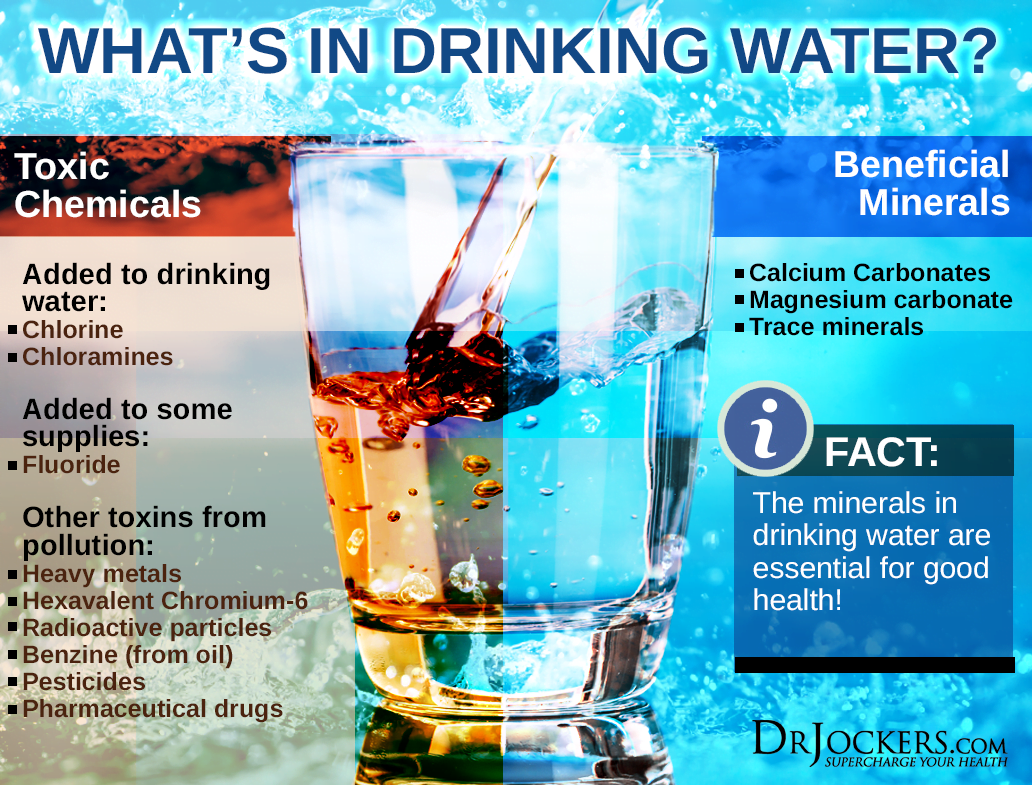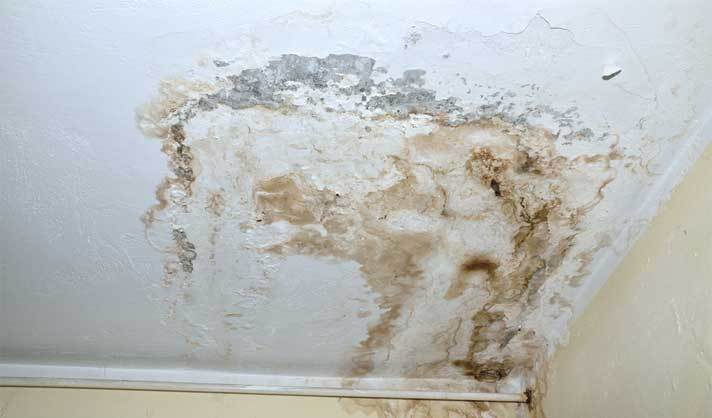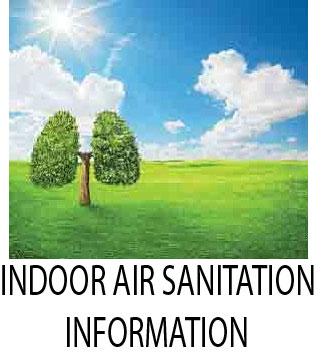This is one of the hundreds of research papers made touting the virtues of ozone in reducing food spoilage and sanitizing produce by breaking down pesticides and killing bacteria and viruses among other things. The narrative pushed by the Search Engines and Air Purifier hucksters is that ozone is toxic, ozone is smog, ozone is dangerous, but the truth is the opposite! You know, the Bible said that in the last days, good would be called bad and bad would be called good. Ozone is not toxic! Ozone is God’s gift to mankind to DESTROY the dangerous pathogens that rob us of health! The only way to counter misinformation is with the truth. I will continue to shout the virtues of ozone from the rooftop (my blog) to help counter the ever so ubiquitous disinformation campaign against ozone. It’s a worthy cause! Here is the article FOOD PROCESSING AND PRESERVATION WITH OZONATION
Ozone, first discovered in 1840 (Schonbein), began being utilized as a disinfection agent in the production of potable water in France in the early 1900.s. The majority of early development was limited to Europe where it became more widely used in drinking water treatment. The potential utility of ozone to the food industry lies in the fact that ozone is 52% stronger than chlorine and has been shown to be effective over a much wider spectrum of microorganisms than chlorine and other disinfectants. Complementing the effectiveness is the fact that ozone, unlike other disinfectants, leaves no chemical residual and degrades to molecular oxygen upon reaction or natural degradation. The fact that ozone has a relatively short half‐life is both an asset and a liability to practitioners. This is particularly true in the treatment of drinking water where ozonation is employed to enhance filtration and provide primary disinfection but requires the addition of chlorine as the terminal disinfectant to maintain the residual in the distribution system. Ozone is effective in killing microorganisms through oxidation of their cell membranes and most of the pathogenic, foodborne microbes are susceptible to this oxidizing effect. During food processing operations, surface disinfection of the product (raw or partially processed) is very important. This is supported by the following statistics: (ozone removes pesticides)
An estimated 30% of fresh produce is lost by microbial spoilage from the time of harvest, through handling, storage, processing, transportation, shelving and delivery to the consumer (Beuchat 1991).
The USDA estimates the costs associated with foodborne illness to be in the range of $ 5.5 billion to $ 22 billion per year. In recent years, increasing attention has been focused on the safety of fruits and vegetables, and in particular on the intervention methods to reduce and eliminate human pathogens from fresh produce. Traditional technology utilizes water with or without a sanitizing agent to wash fresh fruits and vegetables. Chlorine is the most widely used sanitizing agent available for fresh produce, but it has a limited effect in killing bacteria on fruit and vegetable surfaces. The most that can be expected at permitted concentrations is a 1‐ to 2‐log population reduction (Sapers, 1998). Furthermore, the environmental and health communities have expressed concerns about the residual by‐products of chlorine. An alternative treatment is being sought to improve food safety. Research and commercial applications have verified that ozone can replace traditional sanitizing agents and provide other benefits (Bott, 1991; Cena, 1998; Graham, 1997). Many research and industrial trials are underway to validate the use of ozone in the produce industry. Several meetings on this topic have been sponsored by the Electric Power Research Institute (EPRI), including a “Conference on Ozone for Processing Fresh‐Cut Fruit and Vegetables” in April 1998 and an “Ozone Workshop” in May 1998. The produce industry is very interested in this technology. However, many questions still have not been resolved, since experience in commercial application in the United States is lacking (Graham, 1997)
2.2 FRUIT AND VEGETABLE WASHING
One way to maintain or even improve the safety of fresh produce is to wash vegetables and fruits using ozonated water (Hampson and Fiori, 1997). Two types of washing systems, spray and flume, can be used to reduce microbial counts on the surface of produce. Kim et al. (1999) used ozonated water to wash shredded lettuce. They injected 1.3 mM of ozone at a flow rate of 0.5 L/min into a water/ lettuce mixture (1:20, w/w) with highspeed stirring or before stomaching for 3 min and obtained about 2 log cfu/g reductions in total plate counts. Kondo et al. (1989) obtained >90% reduction of total bacterial counts for Chinese cabbage by this method. Ozone is particularly effective against E. coli, the food pathogen of most concern to the produce industry.
2.3 FRUIT AND VEGETABLE STORAGE
Ozone can be employed in cold storage of produce to guard against mold and bacteria at a very low concentration. It can not only destroy mold and bacteria in the air and on the surface of produce but also deodorize (Rice et al., 1982). Many early studies used gaseous ozone to prevent microbial activity on food surfaces and extend the shelf life of fruits and vegetables. Since 1933, numerous experiments have been done on a wide variety of fruits and vegetables, including apples, potatoes, tomatoes, strawberry, broccoli, pears, cranberries, oranges, peaches, grapes, corn, and soybeans (Perkins, 1997; EPRI, 1997). Barth et al. (1995) assessed ozone exposure on storage of thornless blackberries. Blackberries were harvested and stored at 2oC in air with 0.3 ppm ozone. Fungal development was suppressed, while 20% of control fruits showed decay. Ozone treatment did not cause observable injury defects, and surface color was retained for 12 days. Gaseous ozone treatment could be a good choice for extending the shelf life of strawberries because they are easily damaged by water. Ewell (1940) indicated that the shelf life of strawberries, raspberries, currents, and grapes could be doubled if 2–3 ppm of gaseous ozone is applied continuously for a few hours per day. However, Norton et al. (1968) concluded that 0.6 ppm of ozone at 60oC caused damage on Early Black and Howes varieties of cranberries. Further studies are needed using low temperature to confirm whether ozone can control fungus with a less detrimental effect. Kuprianoff (1953) found that the shelf life of apples could be increased by several weeks by applying 2–3 cm3 of ozone/m3 of air a few hours a day. However, ozone concentrations of 10 cm3/m3 resulted in apple damage. Baranovskaya et al. (1979) pointed out that the shelf life of potatoes could be extended to as long as 6 mo at 6–14oC and 93–97% relative humidity with 3 ppm of ozone, without affecting the potato quality. One of the important effects of ozone in cold storage is to slow down the fruit and vegetable ripening process. During ripening, many fruits, such as bananas and apples, release ethylene gas, which speeds up the ripening process. Ozone is very effective in removing ethylene through chemical reaction to extend the storage life of many fruits and vegetables (Rice et al., 1982): H2C=CH2 + O3 CO2 + H2O
2.4 PROCESS WATER RECYCLING
It is estimated that more than 50 billion gallons of fresh water are used by the produce industry annually (Carawan, 1999). A need exists to decrease the quantity of water used, because of dramatically rising water and wastewater treatment costs, difficulties in obtaining large water volumes, highly variable water supplies, and problems of wastewater treatment and disposal. Ozone is a perfect candidate for treatment of water for recycling, since it is a powerful oxidizing agent that has been used to disinfect, to remove color, odor, and turbidity, and to reduce the organic loads of wastewater (Geering, 1999; Langlais et al., 1991; Rice, 1999). Williams et al. (1995) reported that a 3‐log reduction of bacteria was achieved when the wash water from carrots was treated by ozone. Piper (1998) showed that tomato washing using ozonated water dramatically improved the bacterial quality. The wash water was recycled at a Very high quality (light transmission >95%, scale formation <0.01 in/year, and corrosion rates less than 5 m/year for mild steel). There are many studies and applications using ozone to recycle processing water in other industries, particularly the poultry industry. Several commercial technologies are currently available, such as the Praxair and Zentox Water‐Treatment Alliance.
Further research is needed on wastewater from the produce industry. The equipment used in ozone applications in the produce industry is relatively simple. Complete ozone systems with water recycling include generators (size depending on the applications), contact tanks, de‐gas system, ozone‐de‐ struct units, filters, ozone monitors, and exhaust system. The system can be designed to fit a small area and can be very easily installed without any major modifications of the processing lines.
3.1 FISH AND SHELLFISH PRESERVATION
Washing of fish with ozonated water extended shelf life for 5 days: Experiments performed by Violle in 1929 found that ozonated seawater spiked with various strains of bacteria (B. typhus, B. coli, etc.) resulted in sterilization that was comparable to what was obtained in fresh water. Further experiments showed that exposure of shellfish to ozonated water did not adversely affect the taste or appearance of the shellfish. Thus, Violle concluded that preozonation of water was suitable treatment for depuration of shellfish. Later work by Salmon and Le Gall (1936) built upon the work of Violle and reported that fresh fish, stored under ozonated ice, were edible for between 12 and 16 days. Fish treated with sterilized ice (presumably hypochlorous acid treated) were inedible after the 12th day and, possibly after the 8th day. The original work in this area was carried further by others and reportedly resulted in the installation of an ozone system designed to sterilize 2000 kg per day in Le Havre and another facility in Boulogne‐sur‐Mer for treating a daily output of 6000 kg.
3.2 OZONE USED IN COLD STORAGE FOR MEATS
Gaseous ozone was used as a preservation agent in meat and egg storage: Kuprianoff (1953) reported that the first known use of ozone as a food preservation agent was in Cologne, Germany dating back to 1909. Later industrial applications using gas phase ozone for food preservation were reported in 1924 where Hartman stated that .in cold storage ozone is successfully used to prevent the growth of fungi and eggs have been carried at a relative humidity of 88 and 90 percent and mold developments inhibited with the use of ozone.. Hartman summarized by noting that ozone has manifold applications in cold storage and splendid results are being obtained in practice with this reagent every day..
3.3 DISINFECTION AND PRESERVATION OF FRUITS AND VEGETABLES
One of the earliest reported experiments dealing with preservation of fruits was related to ozonation of bananas (Gane ‐ 1933, 1934, 1935, 1936). Since then, numerous studies have been conducted on a wide variety of fruits and vegetables including carrots, broccoli, pears, peaches and apples. The vast majority of these studies have reported some degree of shelf life extension and reduction of pathogenic contamination.
- RECENT STUDIES OF OZONATION IN FOOD PROCESSING
In spite of past regulatory restriction limiting usage of ozone in the U.S. food processing industry, numerous studies were undertaken to determine the efficacy and economics of ozonation. The examples below serve to illustrate some of these studies and conclusions.
4.1 FRUITS AND VEGETABLES
Several controlled studies have been reported in the food science literature relating to the evaluation of the treatment of fruits and vegetables with ozonated water. Kondo et al (1989) observed greater than 90% reduction of total bacterial counts upon treatment of Chinese cabbages with ozonated water (2.3 mg/L) for 60 minutes. Treatment of wash water used in the processing of carrots has been reported to provide 3 log reductions of bacteria (Williams et al 1995). Barth et al (1995) evaluated ozone exposure for the prevention of fungal decay on thornless blackberries. The fruit was harvested and stored for 12 days at 2 deg. C in 0.0, 0.1 and 0.3 ppm ozone, then evaluated for fungal decay (Botrytis cinerea), anthocyanines, color and peroxidase activity. Ozone storage uppressed fungal development for 12 days, while 20% of control fruits showed decay. The treated fruit did not show observable injury or defects. Sarig et al (1996) showed that ozone at low dosages (0.1 mg/g fruit) for 20 minutes, reduced the levels of fungi yeasts and bacteria on grapes, but that higher doses caused some fruit damage.
4.2 POULTRY
The poultry processing industry is a large volume consumer of water. The potential for reuse of poultry processing water represents an attractive economic benefit to the industry. In 1996 the USDA approved the use of ozonation for washing of poultry carcasses (provided that the ozone did not come into direct contact with the product). Studies by Chang and Sheldon (1989) reported that a combination of screening, diatomaceous earth filtration, and ozonation yielded the highest quality of water with total microbial loads (total coliforms, E. coli and salmonella reduced by 99%). A subsequent study, Chang and Sheldon (1989) found no significant differences in measures of carcass quality including skin color, taste or shelf life using recycled, ozone-treated water as opposed to fresh makeup water. The investigators further reported that a 2.7 log reduction in total plate count was observed in the recycled water stream. The results of this study showed that for a typical broiler processing plant (240,000 broilers/day) the savings resulting from chiller water reuse would equate to 50% reduction in discharges and savings of more than $ 45,000 per year.
4.3 EXTENSION OF FOOD PRODUCT STORAGE LIFE
The following are a sampling of studies directed at the application of gaseous ozone in food Storage facilities.
A 1980 study (Gabriel.yants.) showed that cheese stored with periodic ozonation prevented mold growth for 4 months while controls showed mold growth as soon as 1 month.
Japanese researchers indicated good results in the treatment of grains, flour and raw noodles with ozone with significant reductions in microbial growth.
Dondo et al (1992) reported that ozone treatment during refrigerated storage stabilized the surface bacteria count on beef and reduced that on fish.
Naitoh (1989) showed that ozone treatment inside a confectionery factory reduced airborne microorganisms over a 1 ‐ 1.5 year period, remarkably. Inhibited bacterial growth and extended the storage life of the product by 7 days.
4.5 AN ALTERNATIVE TO TRADITIONAL SANITIZERS
In the past two decades, the consumption of fresh fruits and vegetables in the U.S. has dramatically increased. In the meantime, the incidence of foodborne illness due to food pathogens, chemicals, and wastewater has greatly increased. This has been drawing significant public and government attention. The number of produce‐associated foodborne disease outbreaks and the number of cases of illness due to food pathogens have significantly increased in recent years (Tauxe et al., 1997). Moreover, losses in the fresh produce industry that are attributable to microbial spoilage between the time of harvest and consumption are estimated to be as high as 30% (Beuchat, 1991). Chlorine is commonly used in the fresh fruit and vegetable industry to improve microbiological quality and control pathogens. However, many research studies have indicated that it is limited in its ability to kill bacteria on fruit and vegetable surfaces (Bott, 1991; Cena, 1998; Graham, 1997; Rice et al., 1982; Sapers, 1998). Environmental and health organizations have expressed concerns with traditional sanitizing agents with respect to the formation of by‐products, such as trihalomethanes (THMs) and other chemical residues formed in the wastewater returned to the environment (Anonymous, 1998; Cena, 1998; EPRI, 1997; Graham, 1997). The produce industry is concerned about the possibility of future regulatory constraints on the use of chlorine as a sanitation agent. Large amounts of pesticides have been used annually to control insects on fruits and vegetables (Ong et al., 1995). Current technologies cannot totally destroy the chemical residues on the surface of fruits and vegetables. These chemical residues may react with pesticides to form chemical by‐products. These residues ultimately will be consumed by customers and may, directly and indirectly, affect public health. An accumulation of toxic chemicals in the environment has increased the national focus on the safe use of disinfectants, sanitizers, bleaching agents, and other chemicals in the food processing industry. The produce industry is one of the largest and most important contributors to the world economy. It also generates billions of gallons of wastewater annually, with very high concentrations of biochemical oxygen demand (BOD) and chemical residues each year in the U.S. These wastewaters have been linked to many serious problems such as cancer, fish death, water pollution, psychological and physiological diseases, and ecosystem damage. Moreover, the produce industry is paying heavy charges and surcharges for discharging wastewater into public water and wastewater treatment systems (Carawan, 1999). In response to the public concerns about food safety, the President of the United States and Congress issued a new federal initiative in 1997—the President’s Food Safety Initiative—to improve the nation’s food safety system and our environment. One of the approaches to improve food safety is to identify an alternative sanitizer to replace traditional sanitizing agents which can also be used to treat or recycle food processing wastewater. Research and commercial applications have indicated that ozone can replace chlorine with more benefits. In 1997, ozone was self‐affirmed as Generally Recognized As Safe (GRAS) as a disinfectant for foods by an independent panel of experts sponsored by EPRI (Graham, 1997). This self‐affirmation was timely for the produce industry in light of the President’s Fruit and Vegetable Safety Initiative. The produce industry is very interested in the use of ozone and would like to know how, when, and where to apply it.
- POTENTIAL OF OZONE
The potential utility of ozone in the produce industry depends on the fact that as an oxidizing agent, it is 1.5 times stronger than chlorine and is effective over a much wider spectrum of microorganisms than chlorine and other disinfectants. Ozone kills bacteria such as Escherichia coli, Listeria, and other food pathogens much faster than traditionally used disinfectants, such as chlorine, and is free of chemical residues (Langlais et al., 1991; Sapers, 1998). Ozone is a high‐energy molecule. Its half-life in the water at room temperature is only 20 min, and it decomposes into simple oxygen with no safety concerns about the consumption of residual ozone in the treated food product (Graham, 1997). It can also be used for recycling water (Anonymous, 1998; Perkins, 1997). Fresh fruits and vegetables are washed first by ozonated water, and the wash water can be recaptured and treated by a combination of ozonation and filtration. The treated wash water is free of bacteria, color, and suspended solids and can be recycled to reduce water usage. Unlike conventional chlorine‐based washing systems, wastewater discharged by an ozonation process is free of chemical residues, a growing concern related to the environment and groundwater pollution (Anonymous, 1998). Ozone can also destroy pesticides and chemical residues, such as chlorinated by‐products (Langlais et al., 1991). Gaseous ozone is a strong sanitation and fumigation agent and can be used to sanitize foods in the storage room and during shipping to prevent bacteria, mold, and yeast on the food surface and to control insects. It can eliminate undesirable flavor produced by bacteria and chemically remove ethylene gas to slow down the ripening process, thus allowing extended distribution (Rice et al., 1982). For decades, it has been known that ozone is an effective disinfectant and sanitizer for the treatment of food products. It is commonly used in Europe for treatment of public water systems and food processing. It is being used in the U.S. for bottled water and has the potential for use in many food processing applications. Numerous documents and studies confirm the benefits of ozone applications in the food industry (Graham, 1997; Rice et al., 1982). Thus, ozone can successfully replace traditional sanitizing agents to control food pathogens. Ozone is triatomic oxygen, a naturally occurring form of oxygen that was first identified in 1840: 3O2 2O3 + heat & light It is partially soluble in water and, like most gases, increases in solubility as the temperature decreases. It is effective in killing microorganisms through oxidation of their cell membranes (Langlais et al., 1991). Ozone has a unique property of autodecomposition and will leave no toxic residues (Neff, 1998). It has an oxidation potential 1.5 times stronger than that of chlorine and has been shown to be effective over a much wider spectrum of microorganisms than chlorine and other disinfectants. Ozone is generated naturally by ultraviolet irradiation from the sun and from lightning. It can be generated commercially by UV lights (at 185 nm) or corona discharge. If a high concentration of ozone is desired, corona discharge is commonly used. There are two types of feed gas—air, generally at a concentration of 1–3% (w/w), and oxygen, generally at 2–12% (w/w) (Pryor, 1998).







